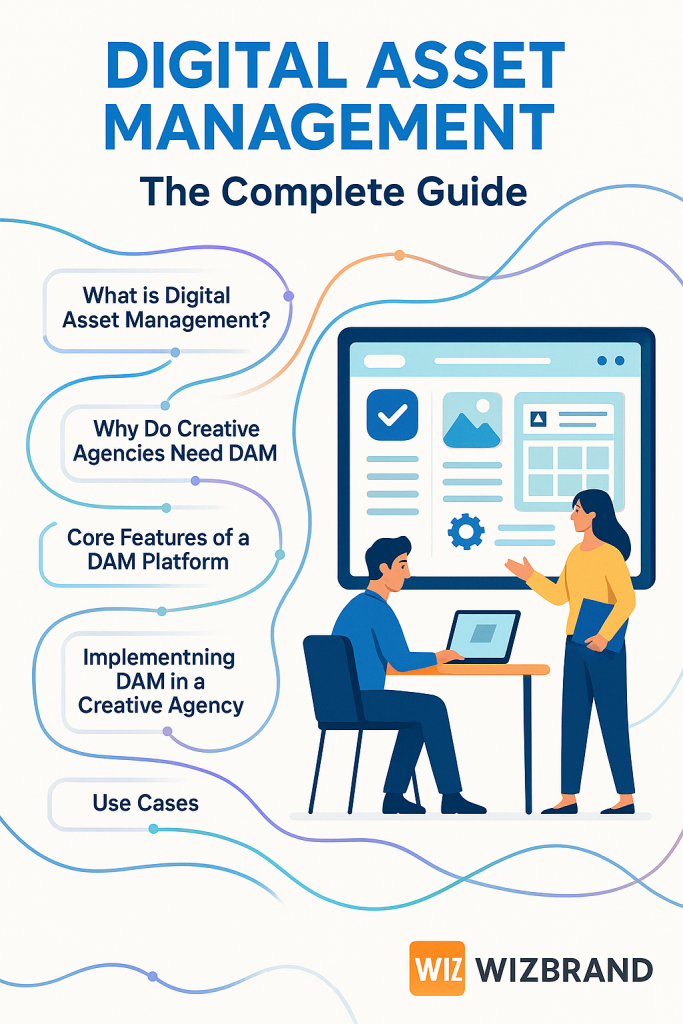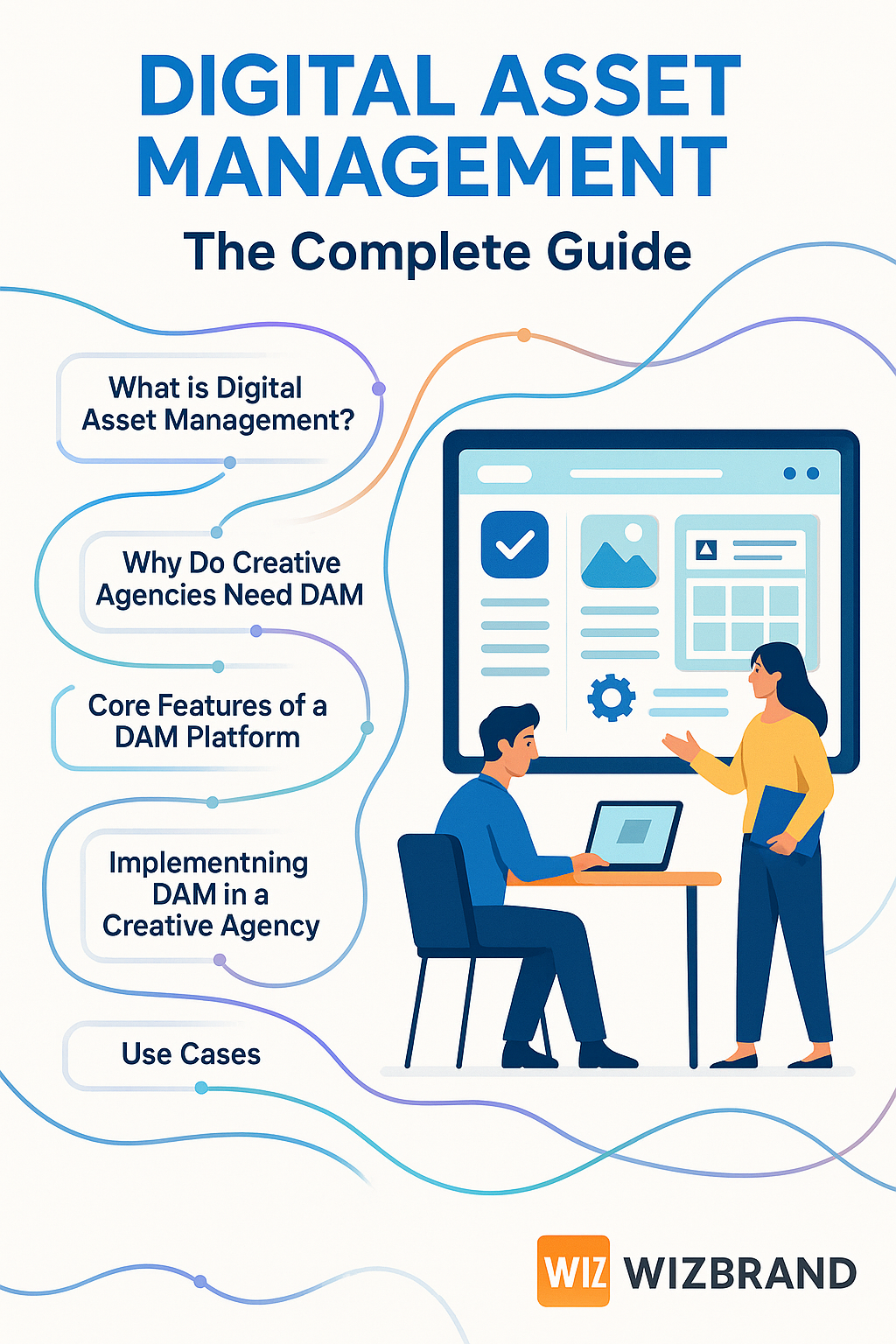
Introduction to Digital Asset Management (DAM) for Creative Agencies
Digital Asset Management (DAM) refers to the process and system for storing, organizing, managing, and distributing digital assets—such as images, videos, design files, and documents—used for marketing, branding, and creative purposes. For creative agencies, where speed, brand consistency, and collaboration are critical, adopting an effective DAM solution can be transformative.
This tutorial will guide creative agencies through the core concepts, benefits, implementation steps, and best practices for leveraging Digital Asset Management to maximize creative productivity, streamline workflows, and enhance client satisfaction.
1. Understanding Digital Asset Management
What is a Digital Asset?
A digital asset is any content in digital form that holds value to the organization. Common asset types for creative agencies include:
- Logos, brand guidelines, and color palettes
- Photographs, illustrations, and graphics
- Videos and animations for campaigns
- Web and social media content
- Marketing collateral (presentations, PDFs, adverts)
The Role of DAM in Creative Agencies
DAM systems serve as a central repository where assets are:
- Stored in an organized, highly searchable manner
- Managed with permissions and version controls
- Distributed and Shared seamlessly internally or with clients
For creative workflows, this enables faster project delivery, better quality control, and protection of intellectual property.
2. Why Creative Agencies Need DAM
Key Challenges Without DAM
- Difficulty locating and retrieving digital assets
- Version confusion and inconsistent branding
- High risk of asset duplication and data loss
- Time-consuming manual approvals and sharing
- Security issues with unmanaged asset sharing
DAM Benefits for Creative Agencies
Efficiency and Productivity
- Centralized access speeds up asset retrieval for all team members
- Machine learning–powered search and tagging shortcut asset discovery
Collaboration
- Multiple users can collaborate on assets with real-time updates
- Teams and clients access only what they need with role-based permissions
Brand Consistency
- Maintaining a single source of truth ensures every asset version is up to date and on-brand
Insights & Reporting
- Track asset usage and engagement for better creative decisions
Security
- Controlled access and activity logs reduce the risk of unauthorized use
3. Features to Look for in a DAM Solution for Creative Agencies
A successful DAM platform for creative agencies should offer:
- Advanced Search and Metadata: Tagging, filtering, and AI-driven search capabilities
- Version Control: Track, revert, or compare previous versions of files
- Collaboration Tools: In-system commenting, approval workflows, and notification systems
- Custom Permissions & User Roles: Secure sharing with clients and external partners
- Cloud-Based Storage: Scalable, remote access to assets from any device
- Integration Support: Connect with tools like Adobe Creative Cloud, project management systems, and social publishing platforms
- Analytics Dashboard: Monitor asset usage and adoption for internal and client reporting
- Security Protocols: Encryption, SSO integration, audit trails
Wizbrand’s DAM solution, for example, provides many of these essential features, making it a strong fit for creative teams aiming to work more efficiently and securely.
4. Step-by-Step Guide: Implementing DAM in a Creative Agency
Step 1: Assess Your Needs and Goals
- Conduct an audit: What types and volumes of assets do you manage?
- Define objectives: Faster workflows? Improved brand consistency? Better client collaboration?
Step 2: Evaluate and Choose a DAM Solution
- Compare platforms based on the features listed above
- Consider scalability and ease of deployment
- Test for user-friendliness and client-sharing options
Step 3: Organize and Migrate Existing Assets
- Develop a consistent folder structure and metadata schema
- Clean out outdated, duplicate, or unused files
- Upload and categorize assets into the DAM
Step 4: Set Up User Roles and Permissions
- Assign roles (designer, manager, client, etc.) with appropriate access levels
- Establish approval workflows for high-value asset use
Step 5: Integrate with Your Creative Workflow
- Connect DAM to creative tools (such as Adobe apps)
- Integrate with project management and collaboration systems
Step 6: Train Your Team and External Stakeholders
- Provide hands-on training sessions for all users
- Share best practices documentation
Step 7: Monitor Usage and Continuously Improve
- Utilize built-in analytics to track asset performance
- Collect feedback and refine organizational structures as needed
5. Best Practices for Maximizing DAM Success in Creative Agencies
- Maintain Metadata Consistency: Use standardized tags and naming conventions for assets.
- Regularly Update and Audit Assets: Remove obsolete files and ensure all content is current.
- Promote Adoption: Encourage your team to use the DAM for all projects; recognize super-users.
- Facilitate Collaboration: Use the built-in review and approval features to bring clients into the creative process.
- Prioritize Security: Implement tiered access control and review audit logs routinely.
6. Use Cases: DAM in Action for Creative Agencies
Campaign Collaboration
All design assets, video drafts, and branding elements for a campaign are stored in the DAM, allowing designers, copywriters, and clients to work together seamlessly.
Brand Consistency Across Channels
A brand manager ensures the latest logos and style guides are always accessible, so every client deliverable meets branding standards.
Fast Content Repurposing
Searching the DAM by campaign, keyword, or asset type enables easy repurposing of creative assets for quick-turn projects.
7. Future Trends in DAM for Creative Agencies
- Artificial Intelligence for automatic tagging, image recognition, and intelligent search
- Deeper Integrations with creative and collaboration platforms
- Mobile-First Access to enable remote creative teams
- Enhanced Analytics for ROI measurement and creative insight
Conclusion
For creative agencies, Digital Asset Management is more than just a file storage tool—it’s a strategic advantage in an increasingly digital, fast-paced, and collaborative industry. By choosing a robust DAM system like Wizbrand, agencies can boost productivity, secure their creative output, and deliver better results to clients—all while maintaining brand integrity and creative excellence.
Whether you’re managing internal projects or collaborating with clients worldwide, investing in DAM will empower your agency to work smarter, faster, and with greater creative control.
